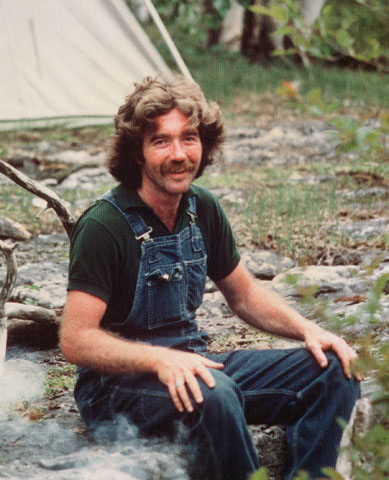|
The Detroit News
- Sunday, April 24, 1983
Cass Corridor Art Honors a Friend
by Joy Hakansan Colby, News Special
Writer
Not one of the artists on view in
the Modern Wing of the Detroit Institute of Arts tries to upstage
the others with a razzle-dazzle performance. Still, the small
exhibit of mostly works on paper, The Carson-McHale Gift: 13
Detroit Artists Remember Joe McHale, packs an emotional wallop -
particularly when one knows how the collection was brought together,
and why.
Joe McHale, laicized Catholic
priest, political activist, and friend to Detroit's Cass Corridor
artists - died at the age of 39 in 1981. So saddened were the
artists he had supported with his friendship and commitment that
they decided to form a memorial collection to present to his wife,
Barbara Carson-McHale. The original suggestion came from Ellen
Phelan, who asked for works on paper.
After the artists had given their
work, ostensibly as a private tribute, Mrs. McHale realized that the
collection was museum-worthy. So, with the artists'
blessing, she offered it to the DIA, which gladly accepted it. The
present show, which will be up through June 12, marks the first time
the Carson-McHale gift has been on public display. In addition,
several works from the permanent collection by participating artists
are hanging in surrounding galleries.
Joe McHale, who was introduced to
art in special children's classes at the DIA, had a lifelong habit
of drawing. He had no illusions about being an artist, his widow
says; still, this collection of works on paper seems especially
appropriate. (The one exception to the paper motif: Thomas Regenbogen's wonderful fan-shaped construction of wood coated with
spackle, enamel and lacquer.)
Each work is special in its own
way, from Jim Chatelain's gyrating skeins of colored crayon to Ellen
Phelan's rich black charcoal landscape, from Nancy Pletos' bit of
concentric geometry to Robert Sestok's rush of small boats. Michael
Luchs' rabbit is a prime piece, containing a strong black rabbit
outline and flashes of red and green pigment. Gordon Newton
contributes a Diving Board with strong thrusts, and John
Egner's triptych in ink and pencil line has some forceful interior
dynamics.

THE CARSON-McHALE GIFT: 13 DETROIT
ARTISTS REMEMBER JOE McHALE
The Detroit Institute of Arts
5200 Woodward Ave. Detroit, MI
313-833-7900
Tough, gutsy,
energetic, aggressive: that's what Detroit's Cass Corridor art is
supposed to be.
Enter Joe
McHale, a former Catholic priest who left the Church in 1971, but
continued to live its social teachings. McHale settled in mid-town
and befriended many, including the Cass Corridor artists. In 1981,
Joe McHale died of cancer at the age of thirty-nine.
Encouraged by
Ellen Phelan, each of the artists close to him presented a work to
his widow, Barbara Carson-McHale, in tribute to their friend's
memory. Ms. Carson-McHale has, in turn, placed these works in the
Detroit Institute of Arts.
The
Carson-McHale gift belies the stereotypic labels that are attached
to Detroit art and that seduce people into thinking about the labels
instead of the work. The gift generally expresses the somber, the
introspective, the calm and quiet aspect of Cass Corridor art. It
is clear that this aspect is inherent in the style because all but
four of the pieces were executed before McHale died and were only
later selected for the memorial.
Each artist
achieves a sense of poise in a different way. For Gordon Newton,
for example, it is with brooding, thrusting planes of richly hued
oil stick. For Halyna Mordowanec, a tumulus image carries the
message of ponderous serenity. John Egner, Mary Preston, Kathyrn
Brackett Luchs, and Phelan use pencil, ink, charcoal, and
black-and-white photographs to evoke solemnity.
As if to
insist upon the paradigmatic energy of Cass Corridor art, three
works involve movement. A loosely patterned background of color
swatches allows Nancy Mitchnick's serene pastel bird-of-paradise
flowers to grow almost across the picture plane. James Chatelain
remembers McHale joyously, with crayon spirals that suggest bat,
ball and the impact of the hit itself. Robert Sestok's view of the
Detroit River uses deliberate, yet impetuous, markings of lumber
crayon to show boats careening across dark water in a visual
metaphor of the anger and pain of loss.
Three
quarters of the pieces were done in 1980 or 1981, and so the
Carson-McHale gift offers an opportunity to see mature work of these
artists, who are now in their mid-thirties to early forties.
Before the
donation of this gift, about half of these artists had not
previously been represented by a major work in the collections of
the Detroit Institute of Arts.
PAUL EDSON

|